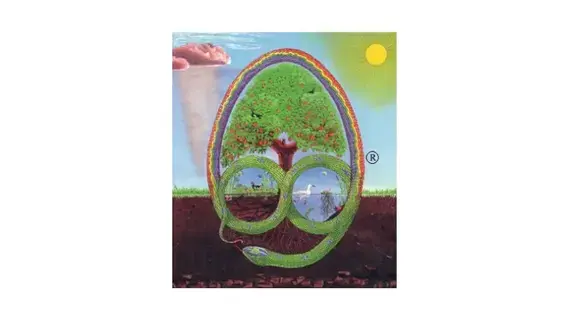Permaculture Design Course
Self-paced course
Certification program
Price
$14.99
Rating
Overview
Why should you study the Permaculture Design Course?
Everyone can benefit from learning about Permaculture and how to apply Permaculture design principles to your life. You can apply these design principles to your garden, community spaces or to the larger environment. This course will allow you to broaden your understanding of Permaculture theory, building your knowledge of all the necessary aspects (like growing food, enriching soils and using waste as a resource) to become fully conversant with Permaculture design. By the end of the course, you will be able to confidently create your first Permaculture design plan.
This course not only provides you with the theory and practical knowledge to create design plans, it allows you to take a step into the world of Bill Mollison, one of the co-founders of Permaculture. Bill's global experience in sharing the principles of Permaculture design, along with his entertaining story telling, will captivate you and challenge you to think critically about how we can all apply the principles of sustainable land use design to our lives and communities.
All students enrolled in the course are invited to join our private Student Group on Facebook. Check your Welcome message to gain access.
Please note: This course does not include an assessment component and therefore there is no formally recognised Permaculture Design Certificate.
What exactly is Permaculture and why is it applicable to everyone?
The concept of Permaculture was first presented by Bill Mollison and his student, David Holmgren, in the mid 1970's. Permaculture is sustainable land use design, based on ecological and biological principles, often using patterns that occur in nature to maximise effect and minimise work. Permaculture aims to create stable, productive systems that provide for human needs, harmoniously integrating the land with its’ inhabitants. The ecological processes of plants, animals, their nutrient cycles, climatic factors and weather cycles are all part of the picture. Inhabitants’ needs are provided for using proven technologies for food, energy, shelter and infrastructure. Elements in a system are viewed in relationship to other elements, where the outputs of one element become the inputs of another. Within a Permaculture system, work is minimised, “wastes” become resources, productivity and yields increase, and environments are restored. Permaculture principles can be applied to any environment, at any scale from dense urban settlements to individual homes, from farms to entire regions.
Who is the Permaculture Design Course delivered by?
This Permaculture Design Course was first convened in 2005 through collaboration with Tony Walkins and Lisa Mollison, Tagari Publications. Tagari Publications' primary function is to support the work of The Permaculture Institute by publishing educational materials on sustainability, with Lisa Mollison fulfilling the role of Managing Director since 1997. All lectures available in this course are a recording of the live delivery of the course in 2005 and feature presentations by Bill Mollison and Geoff Lawton.
Throughout your participation in the digital course, you will be supported by Lisa Mollison, who has been teaching Permaculture design principles to students, volunteers and 'Wwoofers' at Tagari Garden Farm (the home of The Permaculture Institute) since 1996. Lisa Mollison is furthering Bill Mollison's vision to spread Permaculture design principles and ethics across the globe by offering the Permaculture Design Course to a wider audience.
Lisa Mollison, Tagari Publications and The Permaculture Institute, is the copyright owner of all course content and resources. Please note, although unintentional, there is a possibility that some content presented in this course may contain references to deceased people, sacred or secret material and terminology or language which some people may find inappropriate or offensive.
About Bill Mollison
Bill Mollison was the Founding Director of the Permaculture Institute, the first and longest running Permaculture institute in existence, and taught and developed projects from the Arctic through Sub-tropic and Equatorial regions of the planet. There are few countries left in the world where he did not personally plant the seeds of Permaculture. The Peoples of the Pacific, South East Asia, South Africa and seven Amazonian language groups have been inspired by and acted on his teachings, embracing Permaculture as a dynamic tool. He also gave courses in the drylands and developed projects with Native Americans, Indigenous Australians, tribal women of the Deccan, Kalahari, San groups and Pima people of the Sonora. In the USA, Europe and Scandinavia, Bill lectured and helped to develop ecological designs for urban and rural properties, including many city farms and CSA’s (Community Supported Agriculture).
Bill Mollison was vitally concerned with the environment for over forty years. His many roles included: scientist, naturalist and university professor. Later, he became a vigorous campaigner against environmental exploitation which led him to develop Permaculture as a positive solution. Bill devoted his energies towards designing sustainable systems, writing text books and articles on Permaculture, and most importantly, teaching. Permaculture now laps the globe, resulting in thousands of independent associations involved in the areas of sustainable agriculture, reforestation, education and village economics. True to his vision, throughout the world, Permaculture is becoming an everyday part of life.
Instructors
Tagari Publications Permaculture Institute – Permaculture Design Specialists
Tagari Student Support – Permaculture Design Specialists
Lisa Pucci – Tagari Student Support
Greg Knibbs – GK4.4 Instructor Rating1,746 Reviews9,815 Students1 Course
Learning outcomes
Post this credential on your LinkedIn profile, resume, or CV, and don’t forget to celebrate your achievement by sharing it across your social networks or mentioning it during your performance review














